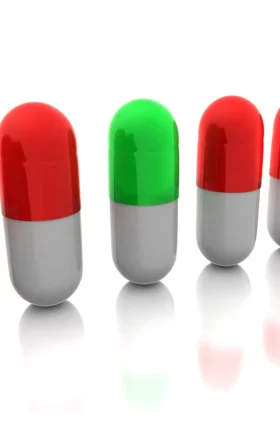It’s well understood fact: licensing agreements play a vital role in the pharmaceutical pipeline. For big pharma, smaller biopharmaceutical firms represent a valuable source of new compounds at a time when R&D pipelines are critically sparse and patent expirations for many blockbuster drugs are imminent. For the smaller biopharma firms, big pharma partners offer resources and commercial expertise to bring promising products to market when access to capital has all but dried up.
This symbiotic relationship—one that has grown more imperative over the past decade—is precisely why the results of The Boston Consulting Group’s 2012 Biopharma Partnering Survey are so striking. While the overall volumes and values for licensing transactions have held relatively steady, top pharma companies have engaged in fewer transactions over the past few years. And for the first time since 2003 (the inaugural years of our survey), perceptions of the industry’s partnership performance have declined. Also for the first time, “medium-sized” pharma has ousted big pharma from its dominant seat. Two mid-sized players in particular—Celgene and Novo Nordisk—have penetrated the highest rankings for partnering capabilities, once considered the exclusive turf of the major companies.
Yet another important finding from this year’s survey was the discovery that performance rankings can change relatively quickly. A winning reputation may be fleeting, just as middling performance can be turned around in short order—within as little as two years. A quick turnaround is especially feasible for “partnering attributes”—the qualities that make for a solid working relationship between licensor and licensee.
And while commercial capabilities are essential, there is a new prerequisite for being considered a partner of choice. A company must focus on partnering attributes: everything from demonstrating flexibility on deal terms and being responsive to allowing the licensor to retain some control over their development program. The good news is that these attributes are under the direct control of business development and licensing (BD&L) departments.
This year’s Biopharma Partnering Survey, the only one of its kind in the industry and BCG’s fifth since 2003, examined licensing and business-development activity in the global biopharmaceutical industry. With 160 responses (a response rate of 22 percent), the 2012 survey had the largest response to date. For executives on either the “buyside” (licensees) or the “sellside” (licensors), the survey remains the premier source of information on licensing activity and sellers’ perceptions, and a valuable indicator of long-term licensing trends during a period of sweeping change in health care.
Each year, the survey targets senior executives (including CEOs, presidents, and heads of business development) from hundreds of smaller biopharma firms worldwide. Respondents reveal which partner characteristics matter most to them and rate individual licensees on those characteristics. Specifically, we examine three types of partnering characteristics: partnering capabilities; cultural fit; and other (i.e., technical and commercial) capabilities, which include clinical and research capabilities, manufacturing expertise, and commercial skills (everything from sales and marketing skills to global reach and pricing capability).
A Case of Complacency?
Although the total number of licensing deals and values are holding steady, there has been a sharp decline in licensing deals among top ten pharmaceutical companies since 2009. Paired with this trend are shifting perceptions of buyside performance, which have slipped slightly from 2010 levels, in both partnering and overall capabilities.
After several years of steady, if modest, improvement, the diminished perceptions in this year’s survey were a surprise. In part, they are a function of this year’s sample (a broader, although slightly less experienced pool of smaller companies). But we believe they also reflect a certain amount of complacency, or at least fatigue, that has overcome buyside companies. Many (although not all) large companies seem to have difficulty sustaining process improvements over a longer period.
At the same time, the range of performance among top buyside companies has narrowed. So although the perceived performance of top companies has dipped, the lowest-ranked companies have improved somewhat, closing the gap. Intensified competition is one reason for the shrinking gap. The narrower range also means that the companies that truly focus on improving their BD&L operations are better able to stand out.
Medium-Sized Pharma Unseats the Majors
An even greater surprise, though, was the entry of two mid-sized firms into the top-tier rankings. U.S.–based Celgene and Denmark-based Novo Nordisk were ranked among the top six companies in two out of three categories: the highest average score across all 17 partnership attributes and the companies that captured the highest proportion of respondents with a positive impression. (Celgene, in fact, came in first in the latter.) Roche won top ranking for highest average score across all attributes, and Merck & Co. garnered the most nominations as a “top partner.”
Celgene’s top rating for positive impressions was the result of its earning the highest rating in 5 of the 17 partnering characteristics surveyed: flexibility on deal terms, responsiveness, executive leadership, willingness to pay the highest price, and therapeutic areas. Novo Nordisk earned the top spot for three characteristics: the desire for both sides of the partnership to develop and prosper, alliance management abilities, and cultural fit.
It is striking that both companies are truly focused, which no doubt helped their perceived performance; potential partners know what these companies stand for. In addition, Celgene has clearly emphasized licensing and business development as part of its strategy—and its executives are visibly committed to these activities. While certain practices and attributes of the two companies may be hard for big pharma to emulate, they are certainly worth aspiring to. These include communicating the therapeutic areas of focus (even if you’re a large, diversified company active in multiple areas), ensuring that your executives are visibly committed, facilitating access, and being responsive.
Fortunes Can Fluctuate Quickly
Over the course of the past two surveys (that is, since 2008), we have seen that a company’s rankings can rise or fall dramatically in a short period.
For example, neither Bristol-Myers Squibb nor AstraZeneca made the top tier in 2008 or 2010, but both were among the top six in the 2012 survey. AstraZeneca, in fact, was a top performer in all three categories in the latest survey. Among those trending down is Johnson & Johnson; in 2008, the company made two of the three top categories, but by 2010 it fell out of the top tier in 2010, and it did not return in 2012.
Moreover, the six top-tier companies reshuffled their positions; GlaxoSmithKline, Merck & Co., and Roche are the only perennials in all three categories over the past three surveys.
Shifting Perceptions, Changing Priorities: Lessons for Big Pharma
Ten years of survey data give us a broad perspective on shifting perceptions and priorities during a decade of tremendous change. Vast structural changes in health care, along with the global financial crisis and its aftermath, have had a profound effect on the economics of the industry, and in turn, on licensing partnership trends. Among the most important lessons we have uncovered:
- The ability to create the most value remains the most important factor in choosing a licensing partner.
- Another key to winning deals is demonstrating core partnering skills during the negotiation phase: for instance, showing creativity and flexibility on the deal terms, being responsive, and having executives who demonstrate their commitment to partnering.
- Core clinical skills are equally essential as firms seek partners that can successfully bring their compounds over the finish line.
- Commercial, regulatory and pricing, and access capabilities are no longer considered differentiators; they are prerequisites. Increasingly, responsiveness and communication are coveted qualities in a partner.
- Global reach has become more important, as licensors recognize the vast market potential—as well as the looming competition—in emerging markets.
- Heft matters less. Since 2008, a significant percentage of deals have been between smaller companies.
To succeed in licensing, buyside firms must remain relentlessly focused on improving their partnering skills. As we’ve seen, those that don’t will experience declining perceptions. And perceptions can swing either way in as little as two years. Complacency is not an option, as Celgene’s and Novo Nordisk’s rise to the top demonstrates. Big pharma no longer has a lock on licensing partnerships, as licensors have now clearly shown they are willing to put partnering strengths above brand names. Companies that understand that partnership goes beyond signing the deal stand to gain—and win the upper hand in securing much-needed future products for their pipelines.
This article originally appeared in PHARMAnetwork magazine , a European publication for pharmaceutical executives.





